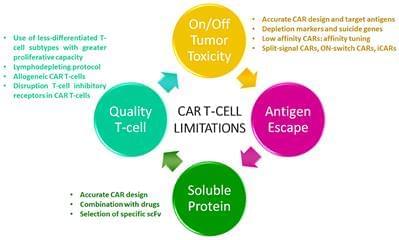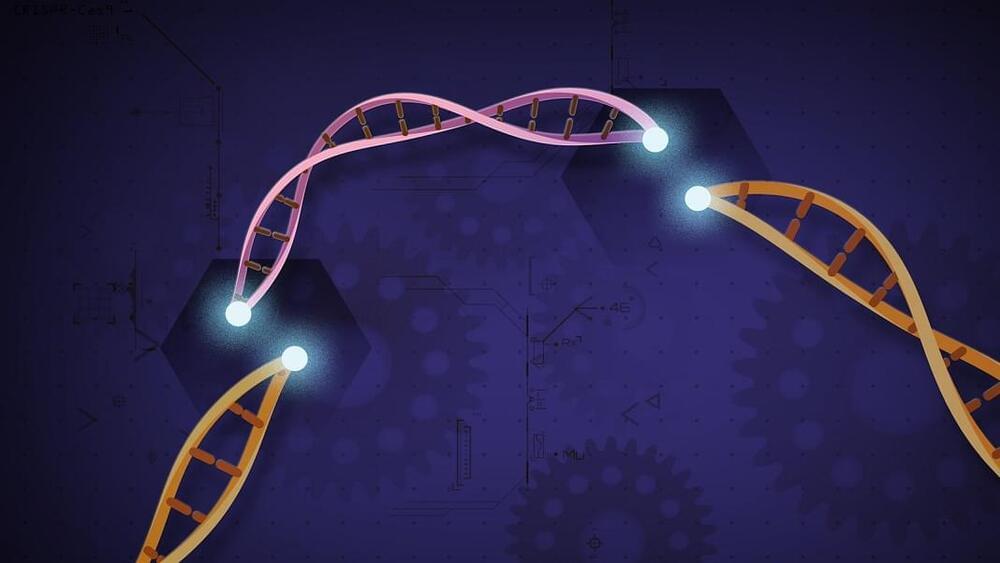The Orion spacecraft is ready to be placed on top of a rocket that will send it towards the Moon.


Brilliant breakdown of a fascinating topic, this.
Use code WENDOVER14 for up to 14 FREE MEALS across your first 5 HelloFresh boxes plus free shipping at https://bit.ly/3cpIz8a.
Watch Extremities at http://youtube.com/extremities.
Buy a Wendover Productions t-shirt: https://standard.tv/collections/wendover-productions/product…ions-shirt.


Multiple myeloma (MM) remains an incurable disease regardless of recent advances in the field. Therefore, a substantial unmet need exists to treat patients with relapsed/refractory myeloma. The use of novel agents such as daratumumab, elotuzumab, carfilzomib, or pomalidomide, among others, usually cannot completely eradicate myeloma cells. Although these new drugs have had a significant impact on the prognosis of MM patients, the vast majority ultimately become refractory or can no longer be treated due to toxicity of prior treatment, and thus succumb to the disease. Cellular therapies represent a novel approach with a unique mechanism of action against myeloma with the potential to defeat drug resistance and achieve long-term remissions. Genetic modification of cells to express a novel receptor with tumor antigen specificity is currently being explored in myeloma. Chimeric antigen receptor gene-modified T-cells (CAR T-cells) have shown to be the most promising approach so far. CAR T-cells have shown to induce durable complete remissions in other advanced hematologic malignancies like acute lymphocytic leukemia (ALL) and diffuse large B-cell lymphoma (DLBCL). With this background, significant efforts are underway to develop CAR-based therapies for MM. Currently, several antigen targets, including CD138, CD19, immunoglobulin kappa (Ig-Kappa) and B-cell maturation antigen (BCMA), are being used in clinical trials to treat myeloma patients. Some of these trials have shown promising results, especially in terms of response rates. However, the absence of a plateau is observed in most studies which correlates with the absence of durable remissions. Therefore, several potential limitations such as lack of effectiveness, off-tumor toxicities, and antigen loss or interference with soluble proteins could hamper the efficacy of CAR T-cells in myeloma. In this review, we will focus on clinical outcomes reported with CAR T-cells in myeloma, as well as on CAR T-cell limitations and how to overcome them with next generation of CAR T-cells.
Multiple myeloma (MM) is an hematological malignancy characterized by the clonal proliferation of malignant plasma cells. Myeloma develops from a pre-malignant monoclonal proliferation of plasma cells (monoclonal gammopathy of undetermined significance) which progresses to smoldering myeloma and finally to symptomatic disease (1, 2). With an incidence of 5.6 cases per 100.000 people/year in Western countries it accounts for 1% of all cancers and around 10% of hematological malignancies. Diagnosis of MM is based on the presence of clonal plasma cells plus monoclonal protein in serum or urine and clinical manifestations including hypercalcemia, renal impairment, anemia and/or bone lesions (acronym: CRAB) (4, 5).
We are living in a time when we can see what needs to be done, but the industrial legacy of the last century has such power invested, politically and in the media, and so much money at its disposal due to the investors who have too much to lose to walk away, and so they throw good money after bad to desperately try to save their stranded assets.
Well, the next decade will bring new technologies which will rupture the business models of the old guard, tipping the balance on their huge economies of scale, which will quickly disintegrate their advantage before consigning them to history, and these new ways of doing things will be better for us and the environment, and cheaper than every before. Just look at how the internet and the smart phone destroyed everything from cameras to video shops to taxis and the very high street itself.
The rest is not far behind and it all holds the opportunity to mend the damage we have done.
If you want to know more about what lies ahead, check out this video.
It might indeed sound more like science fiction but we are approaching an era where everything will be fundamentally disrupted. From the energy that fuels our modern lifestyles, to the food on our plates, from transportation to medicine to production, the changes that the smartphone forced upon everything they touched, from phones to video cameras to personal music players and information portal, well that is set to happen to everything else. And if you want to know more about how autonomous vehicles could change the world, check this out. https://youtu.be/uFRSf_vD-nw

Grayscale wants to convert the trust to an ETF, one that owns bitcoins rather than futures, to lose the discount. Which raises a question: why has the Securities and Exchange Commission approved a bitcoin futures ETF, and not yet a plain bitcoin ETF? Bitcoin is tricky enough. Adding futures compounds the trickiness.
I’m not sure what the answer to this is, but it seems to be that bitcoin scares the SEC, because God knows where it originates (in a server farm somewhere in China?), who holds most of it (cyberbaddies?), what it is used for (illegal activity?), or what risks it may entail (hacking? Fraud?). Bitcoin futures, by contrast, are created and traded within the confines of the CME, under the watchful eye of the Commodity Futures Trading Commission, in the upstanding American city of Chicago.
And a few more words on margins.

One form of “self-sacrifice” was to stand on the banks of the Nile and masturbate into the river as offering to honour Lord Amen (this sacred act was how Amen, Cyclical Eternity, came into being originally). Lots of the neurosis around today are because of the biblical view of “onanism” The term “Onanism” is associated with personal indulgence, or excess (even mortal sin for Catholics) perhaps giving rise to infantilised and repressed sexuality and a PANDEMIC of Christian paedophilia. 216,000 children — shouldn’t the Church in France be closed down?
The Church asks for forgiveness as an inquiry says it treated victims with “cruel indifference”.



“If you accept that meaning is something that emerges from sufficiently complex biological machines, then the only place those machines might exist is here; then it’s correct to say that if this planet weren’t here, we’d live in a meaningless galaxy. That’s different to life. There’s a difference between life and intelligent life.”
Unique events that led to civilisation mean its demise could ‘eliminate meaning in galaxy for ever’.